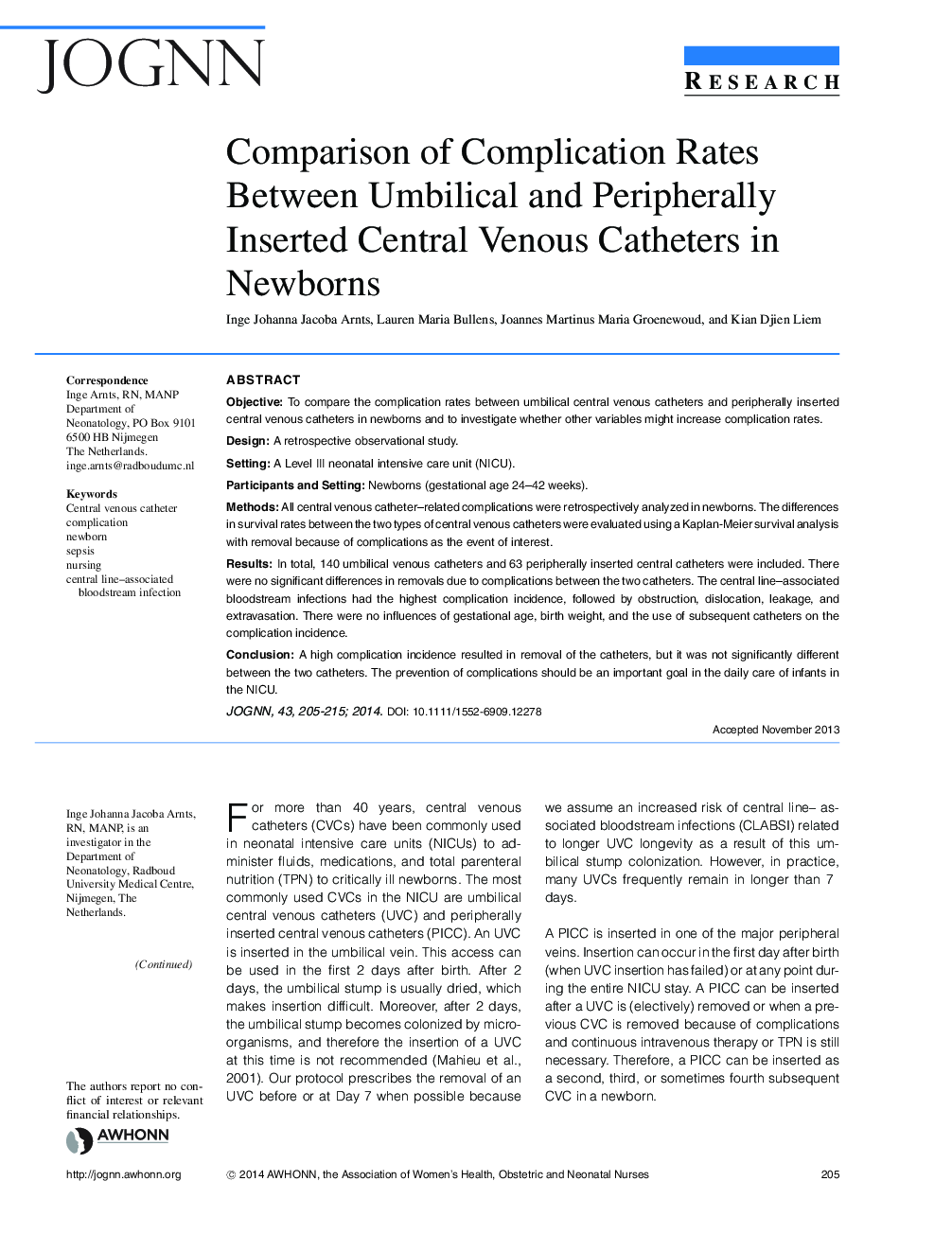| Article ID | Journal | Published Year | Pages | File Type |
|---|---|---|---|---|
| 2633388 | Journal of Obstetric, Gynecologic & Neonatal Nursing | 2014 | 11 Pages |
ABSTRACTObjectiveTo compare the complication rates between umbilical central venous catheters and peripherally inserted central venous catheters in newborns and to investigate whether other variables might increase complication rates.DesignA retrospective observational study.SettingA Level III neonatal intensive care unit (NICU).Participants and SettingNewborns (gestational age 24–42 weeks).MethodsAll central venous catheter–related complications were retrospectively analyzed in newborns. The differences in survival rates between the two types of central venous catheters were evaluated using a Kaplan‐Meier survival analysis with removal because of complications as the event of interest.ResultsIn total, 140 umbilical venous catheters and 63 peripherally inserted central catheters were included. There were no significant differences in removals due to complications between the two catheters. The central line–associated bloodstream infections had the highest complication incidence, followed by obstruction, dislocation, leakage, and extravasation. There were no influences of gestational age, birth weight, and the use of subsequent catheters on the complication incidence.ConclusionA high complication incidence resulted in removal of the catheters, but it was not significantly different between the two catheters. The prevention of complications should be an important goal in the daily care of infants in the NICU.
